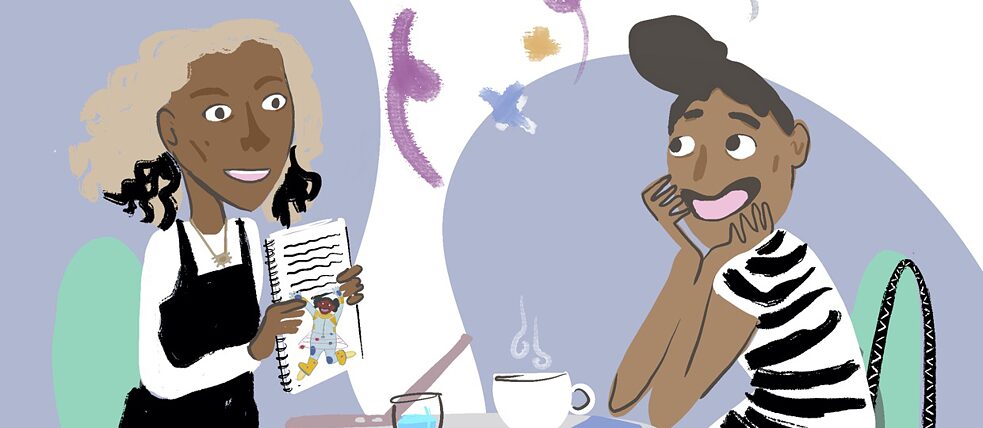Diversity in Children's Literature
A New Chapter: DRIN

The first DRIN writing workshop was held a few months ago, to encourage and support POC authors to write books for POC children. The workshop was led by illustrator Warda Ahmed from Finland, with illustrator El Boum and writer Chantal-Fleur Sandjon from Germany.
By Maryam "Mellu" Abuzaid-Ryu
Six very different authors participated; some had been writing for several years, while others had never really tried to write a book before, at least not for children. The workshop included a range of writing exercises and a reflection on what writing means to us, what kind of writers we are and what kind of stories we want to tell.
The world of children’s literature is new to me because I don’t work closely with children and I’m not a parent, although I am an aunt to many children. I just don’t happen to have read children’s books! I didn’t know what the latest hot reads were, except for Kepler62 and maybe Onneli and Anneli. Luckily, many participants were either parents or worked with children and young people.
Teri Zambrano and I found the workshop through Instagram, and a friend encouraged Nahla Hewidy to join. I’m a cartoonist, but I’ve been interested in writing for a long time. Zambrano and Hewidy already had ideas; Hewidy even had a novel in progress.
We discussed the representation of POC characters in literature. Hewidy, a specialist children’s and young people’s librarian who has spent her life devouring books, has a clear vision:
“There are not enough POC writers and main characters, although they are now slowly starting to appear. If a non-white person appears in a book, the author often explains the character’s background in detail and has them make fun of themselves. I’m not saying it’s not credible storytelling and it doesn’t happen in real life, but do we want to set this example for children and young people? Joke about yourself to get accepted? I am a firm believer in the phrase ‘claim your narrative’: If we are being talked about, we must be the narrators.”
Many of us nodded and Ahmed said that publishers are looking for books written by local People of Colour, but so far, the number of POC authors is tiny.
Then we discussed our own ideas for books, challenges in our own art and writing, and ways of working. The ideas were wide-ranging, from folklore to fantasy to everyday fooling around. We’ve already started putting on ideas on paper. The facilitators were so inspiring and helpful – they have extensive experience combined with a passion for writing and illustration. “I liked the workshop a lot, I was able to work on some of my ideas for children’s books and get some good tips for starting illustration,” said Zambrano. “The workshop was energizing and interesting. It was great to meet new people and be inspired to write together,” said Hewidy.
After the week-long workshop, we created a Facebook group and have already met a couple of times. Our book projects have progressed at different rates, but everyone’s aim is to move their story forward and cross the finish line.
Looking to the future, I decided to ask my fellow participants about their expectations and hopes. Zambrano hopes to keep the team together and to be able to turn to us for advice and comments when needed.
Hewidy’s expectations are more focused on her own work. She wants to make time to write so that if someone wants to read it, she will have something to show. She thinks getting feedback is the best way to improve her own writing, and expects that one day all the workshop participants will have their own book launch, because “everyone had amazing ideas!”
What do the participants want to say to other People of Colour who are interested in writing or have started already? Zambrano is encouraging: “Dare to dream big and write about exactly what feels good!”